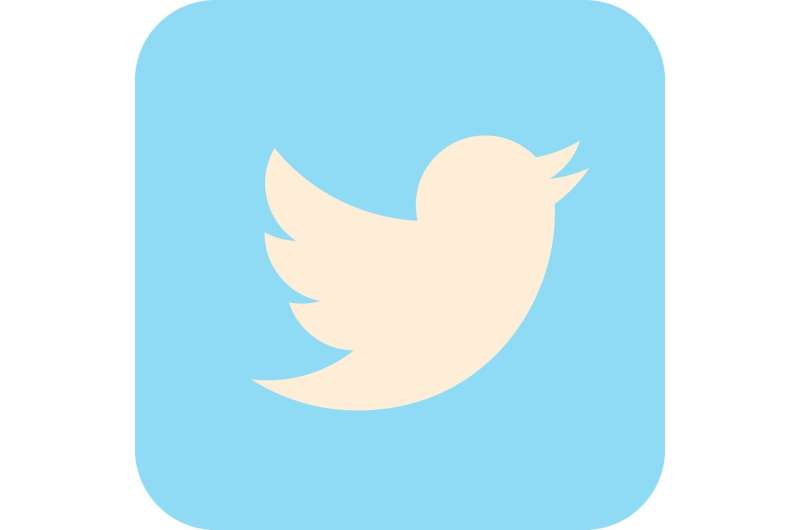Credit: CC0 Public Domain
Twitter, often discounted for its brevity and superficiality, is offering people with traumatic brain injuries powerful new ways to communicate, connect and enjoy everyday life. It's all part of a technological shift that's turning traditional speech pathology on its head.
Five years ago, Sarah was driving home from work, anticipating that evening's date with her partner. But she never made it. Instead, Sarah was rushed to hospital after a truck slammed into her car, injuring her body and her brain, and irrevocably changing life as she knew it.
"Traumatic brain injuries – also known as a TBI – are a split-second thing that can happen to anyone," says Melissa (Liss) Brunner.
Liss is a part-time Ph.D. candidate and Research Associate in the Graduate School of Health's new speech pathology discipline. She's also a speech pathologist who, for over a decade, has been practising and advocating for functional rehabilitation, which gives people with TBI the skills they need to live the best life they can.
Right now, Liss is focused on bringing her field of TBI in speech pathology into the 21st century. Her Ph.D. is supported by a UTS Graduate School of Health Postgraduate Research Support Scholarship and funded through the Australian Government Research Training Program. It aims to develop a framework for health professionals working with people with TBI to better understand social media and how they can use public platforms like Twitter during rehabilitation.
It's not as much of a stretch as it sounds. Liss explains: "Speech pathologists help people who have communication disability to find more ways to communicate and connect with people.
"We know that most people after a traumatic brain injury lose many, if not all, of their friends," adds Liss. "Even their family and really close supporters find it challenging to stay close because the person they know and love can lose the ability to connect – they may talk over the top of other people, or not talk enough as they're not sure of what to say. Until you lose that connection through communication, you often don't realise how important it is."
For Liss, "Social media is a way to keep connecting with your mates and your family, and to make new friends. You can tell them about what's happening, about life in rehab, or you can talk about something completely different and ignore your brain injury."
Connection has always been an important part of Liss's life. Growing up in Lismore, in north-eastern NSW, Liss spent a lot of time with her family, particularly her grandparents.
"My nan and pop moved into a retirement village quite early in life, they were in their 50s or 60s. They set up, near the mailboxes, a table and some chairs. It was called 'the chatterbox'. Every afternoon, for afternoon tea, they'd go to the chatterbox and everyone in the retirement village would bring some cakes and tea and coffee and they'd sit and chat."
"My pop, he'd be sitting there hooking into a cup of tea and a scone laden with jam and cream that was prepared for him by my nan," Liss recalls. "You know, if they couldn't eat and drink or sit around the table and chat with their friends, then it would have totally changed their quality of life."
It's an ethos that continues to inspire Liss. "Just because you have a communication disability, it doesn't mean you aren't part of society or that you can't contribute to society. It just means you may need to communicate in a different way.
"In traumatic brain injury, people often have one of two distinct communication styles," continues Liss. "Some people talk a lot, even too much. Others have trouble starting conversations or keeping them going."
That's why Twitter works so well. "If you only have a certain number of characters, there's less pressure for those who have trouble saying very much, but it also helps the people who say a lot to try and say what they mean in fewer words."
Unlike other social media sites, Twitter also allows you to connect with others without having to become 'friends' or 'followers'.
"So you get lots of people talking to politicians, organisations, or celebrities directly and providing that commentary about their views and opinions. It's also a great news platform, where lots of real-time events get reported and commented on."
Less than two years out from finishing her Ph.D., Liss has already completed systematic reviews of social media and the technology currently used in speech pathology, interviewed people with TBI, analysed their tweets and hashtags (like #TBI and #concussion), run focus groups with rehabilitation teams, and is working on developing a framework for clinicians to use when talking with people with brain injury about using social media.
Guiding her research knowledge and skill development are her multi-disciplinary Ph.D. team, which include an engineer, social marketer, and two speech pathologists, including her primary supervisor UTS's Head of Speech Pathology Bronwyn Hemsley. Liss says, "I knew that by coming here I could continue to work closely with Bronwyn on technology-based research that was really helping people with communication disability.
"We're moving beyond what's done traditionally in speech pathology, embracing the use of social technologies in many forms, but still thinking about it from that real-life, functional approach in rehabilitation."
While Liss is the first to admit that "trying to re-shape society's perception of people with communication disability is really hard", seeing how technology has changed the lives of people like Sarah (yes, she's a real person with a TBI) makes it all worthwhile.
"At the end of the day it's not really about the technology," smiles Liss. "It's about giving people some skills in navigating it. Everyone should be able to enjoy life and contribute to society in a way that's meaningful to them – and being included in social media communities is an important part of that."
Provided by University of Technology, Sydney






















